Honeydew Ants: Their Biology and Ecological Impact
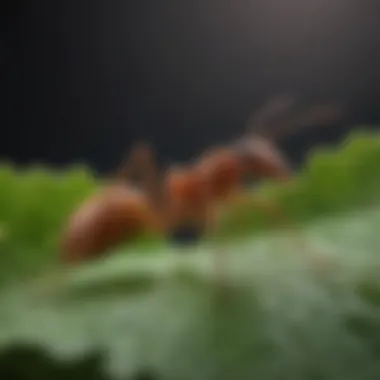
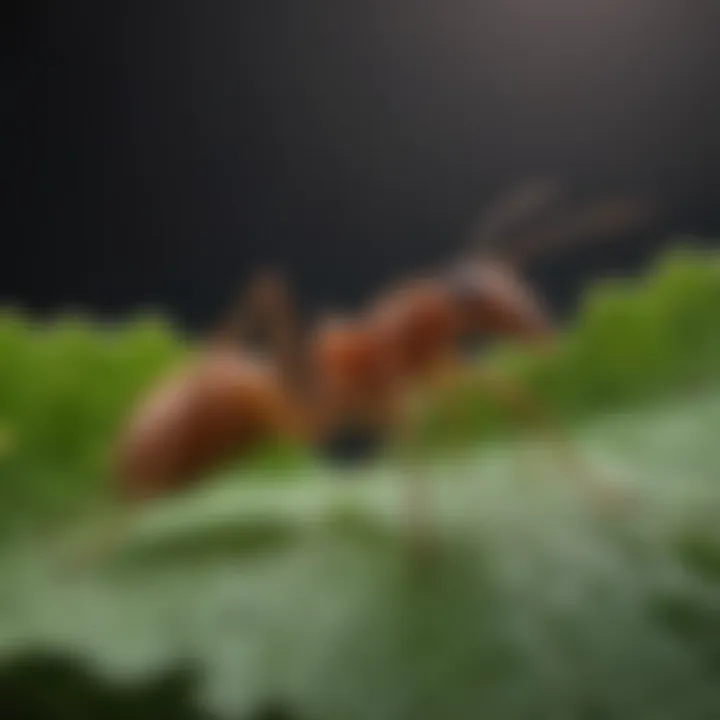
Intro
Honeydew ants are fascinating creatures that play a significant role in many ecosystems. Understanding their biology and impact sheds light on their interactions with other insects, particularly aphids. Their mutualistic relationship allows both species to thrive, highlighting the intricate balance of nature. Because of their unique behaviors, honeydew ants can often be found in residential areas, where their activities may lead to pest problems.
This exploration will cover the biology of honeydew ants, their foraging habits, and the implications of their presence in urban settings. Additionally, we will discuss strategies for managing infestations. Knowledge of these ants is essential for homeowners, enabling them to make informed decisions about pest control.
Pest Identification
Honeydew ants are often associated with other pests, particularly aphids. To recognize the presence of honeydew ants and their companions, let’s consider the following aspects:
Detailed descriptions of common pests
- Aphids: Small sap-sucking insects typically found on plants. They come in various colors, including green, black, and brown.
- Scale insects: These pests secrete a protective cover and can be challenging to see. They also produce honeydew.
- Whiteflies: Similar to aphids, they suck sap from plants and are covered in a powdery wax.
Signs and symptoms of infestations
- Presence of honeydew: A sticky residue found on leaves or surfaces beneath infested plants.
- Sooty mold: Fungal growth that appears black on honeydew-infested plants.
- Visible aphids or scale on plants: Usually found on stems, leaves, or flowers.
Recognizing these signs is crucial for effective pest management. Knowing the interdependence of honeydew ants and these pests will help you identify potential problems before they escalate.
Prevention Strategies
Preventing honeydew ant infestations requires diligence. Understanding their behaviors can inform effective strategies.
Home maintenance tips for pest prevention
- Regularly inspect plants for pests, particularly during warm months when activity is high.
- Keep gutters and drains clean to prevent standing water, which attracts aphids and ants.
- Trim overgrown vegetation that may harbor pests.
Natural deterrents and barriers
- Use diatomaceous earth around the perimeter of your garden.
- Introduce beneficial insects, such as ladybugs, that predate on aphids.
These strategies can greatly reduce the likelihood of attracting honeydew ants and their associated pests.
Treatment Options
If prevention methods are unsuccessful, intervention may be necessary. There are various approaches to thwart honeydew ants and their companions.
Overview of chemical vs. natural treatments
- Chemical treatments: Insecticidal soaps and systemic pesticides effectively target aphids and limit honeydew production.
- Natural treatments: Neem oil disrupts aphids' life cycle, making it harder for them to reproduce.
Step-by-step guides for DIY treatments
- Insecticidal soap application: Mix a solution according to the manufacturer’s instructions. Apply it directly on the affected plants.
- Sugar-water traps: Mix equal parts of sugar and water. Place traps near infested plants to lure and capture ants.
By employing these treatments, a homeowner can manage honeydew ants effectively.
Prolusion to Honeydew Ants
The study of honeydew ants is a significant scientific endeavor, especially because they exhibit unique biological traits and behaviors that are crucial to various ecosystems. This section aims to set the stage for a deeper understanding of honeydew ants, exploring their functions and implications. It is essential to comprehend both their biological characteristics and environmental roles to appreciate their impact thoroughly.
Understanding honeydew ants allows homeowners and gardeners to recognize their presence better, differentiate them from other ant species, and grasp the potential consequences of their interactions with pests and plants. Their relationship with aphids is particularly noteworthy, as it shapes local plant health and pest dynamics. Hence, recognizing honeydew ants is not merely an academic exercise but a practical necessity for effective ecological management.
Defining Honeydew Ants
Honeydew ants are a diverse group of ants known for their mutualistic relationships with aphids and other sap-sucking insects. The term "honeydew" refers to the sugary excretion produced by these insects, which the ants consume as a primary food source. This relationship is beneficial for both parties. Ants protect aphids from predators, ensuring a reliable supply of honeydew, while aphids experience enhanced survival chances.
These ants are primarily classified under several genera, including Formica, Camponotus, and Lasius. Their size, color, and social behavior can vary widely depending on the species. Generally, honeydew ants are social insects, living in colonies that can range from a few dozen to thousands of individuals.
Importance in Ecosystem
Honeydew ants play a critical role in maintaining ecological balance. They act as mediators in plant-pest interactions, influencing the health of various plant species. When these ants foster aphid populations, their presence can lead to increased sap-sucking pressure on plants, which may translate to decreased vitality in certain crops or ornamental plants. However, their sugar-rich diet from honeydew encourages a rich biodiversity of insects. This, in turn, can attract other beneficial insects and predators.
Their foraging behavior can also aerate the soil, promoting healthier plant growth. Consequently, honeydew ants can support ecosystems by interacting with numerous species, helping both pollinators and predators thrive in their habitats.
Moreover, the presence of honeydew ants can signal the state of pest management in residential gardens. Understanding their behavior can guide homeowners in addressing any issues arising from excessive aphid populations and the resulting impact on their gardens.
"Honeydew ants exemplify the interconnectedness of species within ecosystems, underscoring the importance of each insect's role in environmental health."
Biology of Honeydew Ants
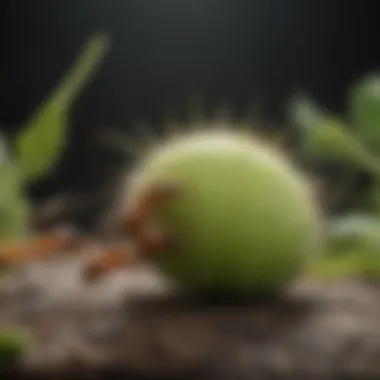
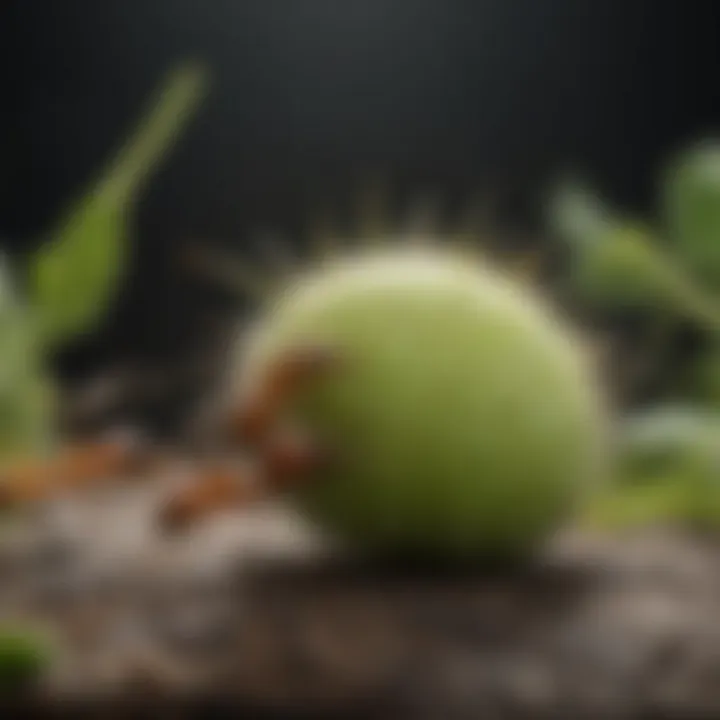
Understanding the biology of honeydew ants is vital for grasping their role in ecosystems and how they interact with other species. This section will explore the anatomical features that facilitate their behaviors and survival, along with the life cycle stages that define their development. Knowledge of these elements can aid in managing their presence in gardens and homes, as well as enhancing the appreciation of their ecological contributions.
Anatomy and Physiology
Honeydew ants have distinct anatomical characteristics that enable their specific lifestyle. These ants are generally small, with varied sizes depending on the species. Their bodies are composed of three main parts: the head, thorax, and abdomen. The head houses sensory organs, including antennae that detect chemical signals. The strength of their mandibles allows them to harvest aphids and protect their colonies.
The physiology of honeydew ants is equally noteworthy. Many species possess a special gland that produces a chemical attractant for aphids. This mutualistic relationship highlights their adaptation to reliance on aphid honeydew as a food source. Additionally, the exoskeleton provides protection, moisture retention, and structural support as they navigate their environments.
Life Cycle
The life cycle of honeydew ants can be divided into four distinct stages: egg, larva, pupa, and adult. Each stage plays a crucial role in ensuring the continuity of the ant colony.
Egg Stage
In the egg stage, honeydew ants begin their life cycle. The queen lays eggs in protected environments to ensure their safety. These eggs are small, typically oval-shaped, and vary in color. A key characteristic of the egg stage is its vulnerability, as eggs are sensitive to environmental factors. This stage is beneficial as it lays the foundation for future generations. The unique feature of this stage is the high potential for genetic diversity, which can arise from mating strategies employed by the queen. However, this vulnerability also has disadvantages; predation from other species or unfavorable conditions can result in loss of the eggs.
Larval Stage
The larval stage is where honeydew ants undergo significant growth. Larvae are legless and rely entirely on the workers for nourishment. This cooperation highlights their social structure and dependence. A critical aspect of this stage is that larvae will feed on substances provided by the workers, including honeydew from the aphids. The advantage of this stage is the rapid growth rate, allowing for a swift transition to the next phase of life. However, they are also still vulnerable to environmental threats, making the protection of the colony essential.
Pupal Stage
During the pupal stage, transformations occur that prepare the ant for life outside the colony. The larvae spin cocoons, where they undergo metamorphosis. This stage is marked by a vulnerable transformation process. A distinctive characteristic is that the pupae can be either wrapped in silk or exposed, depending on the species. The advantage of this stage includes the reorganization of body structure crucial for functionality in adulthood. Nevertheless, this stage can be risky, as a lack of proper conditions can hinder development.
Adult Stage
The adult stage is the final phase of the life cycle. At this point, honeydew ants have developed the features necessary for foraging and reproduction. One noteworthy characteristic of adult honeydew ants is their division of labor. Some become foragers, while others focus on nurturing the larvae or protecting the colony. This specialization is beneficial for efficient colony management and resource allocation. Furthermore, adults are capable of identifying aphids and other food sources essential for survival. However, they face threats from predators and environmental changes that can disrupt their colonies.
Understanding the biology of honeydew ants is crucial for homeowners and gardeners. The life cycle stages offer insights into potential management strategies and the overall ecological benefits they contribute.
Feeding Habits
Honeydew ants have unique feeding habits that are crucial to their survival and influence broader ecological interactions. Understanding these habits reveals the complex relationship they hold with other species, particularly aphids. Their feeding behavior and preferences are essential not only for their own development but also for their impact on pest populations, making it a vital area of study for gardeners and homeowners alike.
Role of Aphids
Aphids serve a significant role in the diet of honeydew ants. These small, sap-sucking insects produce a sugary substance known as honeydew, which honeydew ants actively collect. Ants are drawn to honeydew primarily due to its high sugar content. This nutrient-rich food source provides essential energy, supporting the ants' activities such as foraging and reproduction.
In return for this food, honeydew ants protect aphids from predators, allowing them to thrive. This relationship highlights a mutual dependency—aphids gain a protective ally, while honeydew ants secure a consistent food supply. This dynamic can lead to population booms in both species, creating imbalances in the garden ecosystem.
"The relationship between honeydew ants and aphids showcases the intricate balance of ecological interactions that can significantly affect plant health and pest populations."
Honeydew Production
Honeydew production is a fascinating process that underpins the feeding habits of honeydew ants. Aphids, through their feeding on plant sap, excrete excess sugars, forming honeydew. This substance not only attracts honeydew ants but can also encourage other pests, like ants, to intrude on gardens, as it becomes a desirable resource.
For gardeners, the presence of honeydew can be an alarming sign. It often indicates a larger population of aphids or other sap-sucking insects nearby. Furthermore, honeydew can lead to problems such as sooty mold, a fungal condition that affects plants. The sugary residue promotes mold growth, which can hinder photosynthesis and weaken plants over time.
In summary, honeydew not only fuels the honeydew ants but also serves as a marker for potential pest issues. Awareness of this dynamic can empower garden and lawn management, guiding homeowners on when to intervene before extensive damage occurs.
Behavioral Patterns
Understanding the behavioral patterns of honeydew ants provides crucial insights into their ecological functions. These behaviors are not only integral to their survival but also affect their interactions within the ecosystem. Exploring these patterns can help homeowners and gardeners develop strategies to manage them effectively.
Foraging Behavior
Honeydew ants exhibit complex foraging behaviors designed to maximize their access to food resources. Their primary source of sustenance comes from the sweet excretions, known as honeydew, produced by aphids. Ants will actively seek out aphids and protect them from various predators, ensuring a continuous supply of this vital resource.
The foraging process typically involves ants following pheromone trails, which they lay down to lead fellow colony members to food sources. These trails can rapidly increase the number of ants in a location where food is available. In addition, honeydew ants often display aggressive behaviors toward other insects that threaten their food sources, illustrating their protective strategies.
Households with aphid-infested plants may notice honeydew ants conducting intricate foraging activities. For example, a single foraging ant may return to the nest several times to gather its findings, increasing colony efficiency.
Nesting Preferences
Honeydew ants show specific preferences for nesting sites, which greatly influence their behavior and interactions with the environment. Common nesting locations include soil, leaf litter, and under stones. These locations offer protection from predation and environmental elements.
Some species prefer to establish nests close to aphid populations to ensure close access to honeydew. This proximity also enables them to defend their food resources more effectively. It is not uncommon for ants to create nests in urban settings, particularly in gardens, which may raise concerns for homeowners due to the potential damage to plants.
Ants are highly adaptable and will switch nesting sites if conditions become unfavorable. For example, excessively wet or dry conditions may prompt them to relocate. Understanding their nesting habits can assist homeowners in implementing preventive measures if honeydew ants become a nuisance.
"Foraging and nesting behaviors of honeydew ants play a crucial role in maintaining their populations and ecological balance."


In summary, by exploring the behavioral patterns of honeydew ants, one can gain valuable insights into their role in the ecosystem and their impact on residential areas. This knowledge helps in developing effective management measures that benefit both the environment and household tranquility.
Relationship with Other Species
Understanding the relationship that honeydew ants maintain with other species is crucial to comprehending their ecological role. These interactions include symbiotic partnerships, both beneficial and competitive engagements. The complexity of these relationships not only influences the behavior of the ants but also affects various other organisms within their environment.
Symbiotic Relationships
Mutualism with Aphids
The mutualistic relationship between honeydew ants and aphids stands out as a key component in their ecosystem interactions. Honeydew ants protect aphids from predators like ladybugs, allowing aphid populations to flourish. In return, aphids secrete honeydew, a sugary substance that serves as a food resource for the ants. This mutually beneficial arrangement is advantageous for both parties, supporting population growth and sustainability.
One of the noteworthy characteristics of this mutualism is its efficiency. Ants can form large colonies that actively tend to aphid herds, ensuring a steady supply of honeydew. However, this relationship is not without drawbacks, particularly when it leads to overpopulation of aphids. Such overpopulation can strain plant resources. Additionally, it may complicate pest management strategies for homeowners, as the ants may inadvertently assist aphids in spreading plant diseases.
Interactions with Other Ant Species
Honeydew ants also engage with other ant species, and these interactions can significantly impact their colonies. For instance, some species might enter into competitive behavior over territory and resources. This competition can drive changes in foraging patterns and nesting behavior. Cooperation can also occur, with some ants forming coalitions to defend food sources or territory against common threats.
The dynamics of these interactions offer insights into the adaptability and social structures of ant colonies. Notably, certain honeydew ant species exhibit aggressive behaviors toward other ants, which may be an evolutionary strategy to protect their resources. Such adaptability can be advantageous in environments where there are limited resources or increased predation pressure. On the downside, conflicts between species can lead to decreased agility in managing their ecological niche.
Predation and Competition
The predation pressure and competition faced by honeydew ants play a pivotal role in shaping their behaviors. Predators such as spiders and birds pose threats to their population. The presence of these predators can compel honeydew ants to remain hidden or develop defensive behaviors to ensure their survival. Furthermore, competition with other insect species for food resources can dictate their foraging habits.
In gardens and lawns, understanding these dynamics becomes essential for effective pest management. Homeowners should consider both the benefits offered by honeydew ants in pest control and the potential for negative consequences linked to their interactions with other species. This comprehensive understanding will help in developing strategies to maintain a healthy garden ecosystem without compromising the plants’ health.
Impact on Gardens and Lawns
The presence of honeydew ants in gardens and lawns is a subject requiring careful study. These ants play a significant role in the ecosystem, both positively and negatively. Understanding their impact can help homeowners manage their habitats effectively.
Damage to Plants
Honeydew ants can cause substantial damage to various plants. Their intense foraging behavior often coincides with the presence of sap-sucking insects like aphids. These insects excrete a sugary substance called honeydew, which attracts ants. When ants disturb or protect aphids, they create an imbalance that can lead to poor plant health. Some possible impacts include:
- Weakened plants: The sap consumption by aphids can reduce the vigor of the plant.
- Mold growth: The honeydew can promote the development of sooty mold on leaves, obstructing sunlight absorption and leading to decreased photosynthesis.
As a result, plants may display signs of stress, including wilting or yellowing leaves. Therefore, understanding how honeydew ants interact with aphids is crucial for maintaining healthy vegetation.
Influence on Pests
The influence of honeydew ants on pest populations is another critical area of concern. Their interaction with honeydew and its consequences extend beyond mere attraction of other pests.
The Role of Honeydew
Honeydew acts as a powerful attractant for various pests. This sugary substance serves as a food source, drawing in numerous insects. For example, flies and wasps are commonly attracted to honeydew. This can lead to increased pest populations in gardens and lawns, complicating pest management efforts. The appealing nature of honeydew offers a biochemical appeal, making it a central focus of these dynamics. Homeowners must be aware of this factor to adopt effective pest control measures.
Pest Attraction
The aspect of pest attraction linked to honeydew is important. As honeydew ants protect their aphid partners, they inadvertently facilitate pest emergencies in gardens. Increased pest populations pose a threat to other plant species, often leading to greater damage over time. Highlights of this concern include:
- Higher infestation rates: With ants acting as protectors of aphids, other insects find favorable conditions for reproduction.
- Loss of biodiversity: These dynamics can shrink the number of healthy plants as pests overtake their resources.
In sum, honeydew ants not only influence the immediate environment of gardens and lawns but also impact entire ecosystems. Understanding these relationships is key for homeowners looking to offset any negative effects while enhancing their gardens' health.
Health Risks and Considerations
Understanding the health risks and considerattions associated with honeydew ants is vital for homeowners and gardening enthusiasts. Though these ants can play an important role in the ecosystem, their presence also raises certain health concerns that should not be overlooked. Knowledge of these risks can help residents manage their environments more effectively and make informed decisions about pest control.
Allergies and Bites
Honeydew ants are generally not aggressive; their bites can still pose a risk to individuals, especially those with sensitivities. When honeydew ants feel threatened, they may bite to protect their colony. For some people, these bites can lead to allergic reactions. Symptoms can range from mild irritation to severe reactions involving swelling, pain, and in rare cases, anaphylaxis.
If you encounter a honeydew ant bite, initial care includes washing the area with soap and water. Applying ice can help reduce swelling and relieve pain. Over-the-counter antihistamines may also be effective for mild allergic reactions. For more severe symptoms, or if the reaction escalates, it is prudent to consult a healthcare professional.
It is essential to recognize signs of an allergic reaction and respond swiftly to any unusual symptoms following a honeydew ant bite.
Hygiene Concerns
Honeydew ants can pose hygiene issues, particularly in residential areas. Their diet mainly consists of honeydew, a sugary substance excreted by aphids. This substance can lead to fungal growth and attract other pests, which further complicates cleanliness. The accumulation of honeydew can create sticky surfaces that are unpleasent and may serve as a breeding ground for bacteria.
Homeowners should take prevention steps to minimize such risks. Regular cleaning around plants and gardens where honeydew ants are present is essential. Removing aphids and their honeydew will not only deter the ants but also help maintain a hygienic environment.
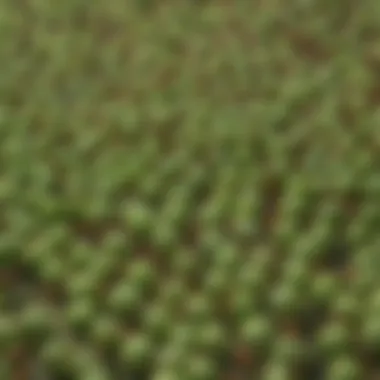
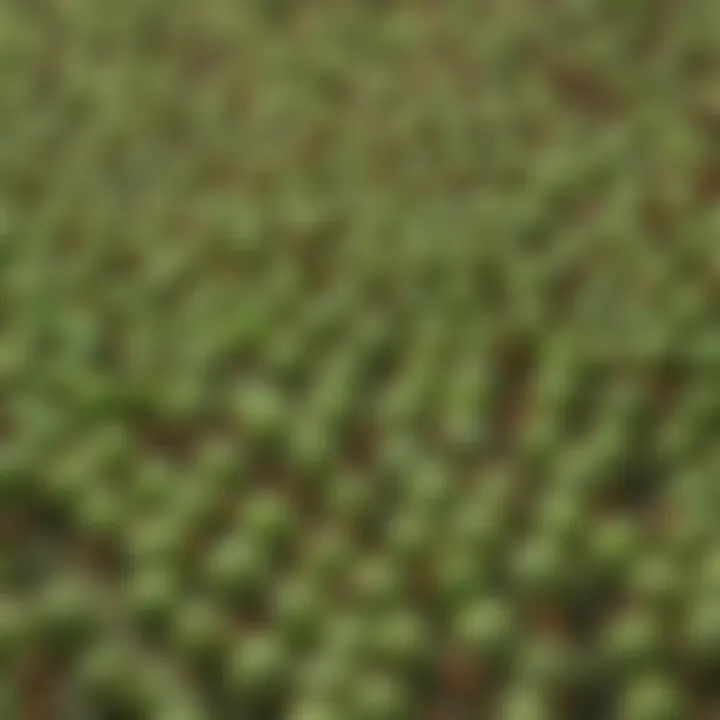
In addition to maintaining physical cleanliness, one should also ensure that proper waste management practices are in place to prevent the attraction of honeydew ants and other pests.
Managing Honeydew Ants
Managing honeydew ants is crucial for those who encounter these insects in their homes or gardens. Understanding the behavior and impact of honeydew ants can assist in creating effective strategies for control. These ants play a significant role in their ecosystems, often benefiting certain pest species, like aphids. Without proper management, they can lead to a rise in pest populations. Homeowners need to be informed about prevention and treatment options to mitigate any negative effects on their plants and living spaces.
Prevention Techniques
Preventing honeydew ants from invading your space begins with understanding their habits and ecology. Reducing factors that attract these ants is the first step. Here are some useful prevention techniques:
- Maintain cleanliness: Regularly clean areas in and around your home, especially food sources. Spilled sugar or syrup can attract them.
- Seal entry points: Any cracks or openings in your home should be sealed to prevent entry. This includes windows, doors, and foundations.
- Landscape wisely: Keeping vegetation well-trimmed and away from the house can help reduce ant access.
Implementing these techniques can significantly lower the chances of honeydew ants invading residential areas.
Treatment Options
When prevention is no longer effective, treatment options must be considered to manage honeydew ant issues. Both natural and chemical treatments exist to address the problem.
Natural Methods
Natural methods involve using environmentally friendly solutions to manage honeydew ants. These solutions often include natural repellents or deterrents. Their key characteristic is safety for humans and pets. They are preferred for those concerned about chemical exposure.
- Diatomaceous earth: Sprinkling this around entry points can help. It works by dehydrating ants as they pass over it.
- Essential oils: Oils such as peppermint or tea tree act as effective repellents. Their unique feature is their pleasant scent, which is a bonus for homeowners.
While natural methods are beneficial, some may find them less immediate compared to chemical treatments. They often require consistent application for effectiveness.
Chemical Treatments
Chemical treatments involve the use of specifically formulated pesticide products to manage honeydew ants. The key characteristic of these treatments is their rapid effectiveness in controlling ant populations. They can be a good choice for immediate relief in severe infestations.
- Bait traps: These attract ants and contain poison that workers take back to the colony. It targets the queen and can lead to a reduction in the entire population.
- Sprays: Ready-to-use insecticide sprays can quickly eliminate visible ants and provide some residual effect.
However, chemical methods have some disadvantages. They can pose risks to non-target species and the environment. Homeowners must read instructions carefully and consider these factors before application.
Effective management of honeydew ants involves understanding both natural and chemical approaches, ensuring a balance between effectiveness and environmental safety.
Proper management of honeydew ants requires a combination of prevention techniques and thoughtful treatment options. Understanding their biology and behavior is key to reducing their impact effectively.
Recent Research and Findings
The study of honeydew ants is a continuously evolving field, with recent research shedding light on their behavior and implications for pest control. Understanding these aspects is crucial for both homeowners and professionals dealing with pest management. New findings not only enhance knowledge about honeydew ants but also provide actionable insights that can improve ways to manage their populations.
Studies on Honeydew Ant Behavior
Recent studies have focused on the foraging patterns of honeydew ants, revealing their complex social structures and communication methods. These ants are known to establish trails to food sources, particularly those emitting honeydew from aphids. Researchers have utilized advanced tracking methods to observe these trails, offering insights into how ants communicate.
This behavior showcases their ability to adapt to environmental changes. For instance, honeydew availability fluctuates depending on the presence of aphid populations. Some studies indicate that honeydew ants can modify their foraging strategies based on resource abundance. This adaptability indicates not only their survival tactics but also their role in the ecosystem, as they influence aphid populations through their mutualistic relationships.
Moreover, experiments suggest that environmental factors, such as temperature and humidity, significantly impact their activity levels and foraging success. As climates change, this could have significant implications for their behavior. These studies invite further research into potential changes in honeydew ant populations and distributions in various regions.
Innovations in Pest Control
With the growing concern about pest management in domestic settings, recent innovations aimed at controlling honeydew ant populations deserve attention. Integrated pest management (IPM) approaches have appealed to many homeowners. IPM combines biological control with habitat management to reduce pest issues while minimizing harm to beneficial species.
One innovation includes the use of bait systems that target honeydew ants without affecting other insects. Products containing boric acid have been developed to disrupt their feeding behavior.
In addition, research on natural predators of honeydew ants offers another method for control. Introducing certain bird species or beneficial insects that prey on honeydew ants can alter their population dynamics. These methods can be particularly effective in residential areas, providing homeowners with ecologically responsible options.
The exploration of pheromonal traps is another area gaining traction. By exploiting the communication methods of honeydew ants, researchers hope to develop traps that can attract and capture them more efficiently than traditional baits. Such innovations highlight the relevance of ongoing research in offering practical solutions for ant management.
In summary, recent research not only deepens the understanding of honeydew ant behavior but also opens doors to progressive pest control methods that are both effective and sustainable.
With the growing body of knowledge, continued exploration in this domain will further arm homeowners and pest management professionals with tools to confront the challenges posed by honeydew ants, leading to more informed decision-making.
Closure
In this article, we explored the intricate world of honeydew ants, emphasizing their biology and impact on ecosystems. Understanding the significance of honeydew ants allows homeowners to manage their presence effectively while appreciating their role in nature. The interactions between honeydew ants and aphids illustrate a remarkable symbiotic relationship in which both species benefit from one another, showcasing nature's delicate balance.
Summarizing Key Points
- Honeydew ants play an essential role in ecosystems, particularly through their relationships with aphids.
- They contribute to pest management, but their presence can also lead to complications in residential areas.
- Knowledge about their biology, including anatomy and life cycle, is crucial in adopting suitable management strategies.
- Recent research expands understanding of honeydew ants, paving the way for innovative pest control methods.
Future Directions in Study
Future studies should focus on several aspects:
- Understanding Behavioral Adaptations: Research can explore how honeydew ants adapt to changing environments and their impact on local biodiversity.
- Innovative Pest Control Techniques: Investigate new ways to integrate ecological practices in pest management, balancing honeydew ants’ benefits and drawbacks.
- Impact of Climate Change: Examine how climate change affects the life cycle and behavior of honeydew ants and their interactions with other species.
These focal points can provide a more comprehensive view of honeydew ants, benefitting both ecosystems and human management strategies.



